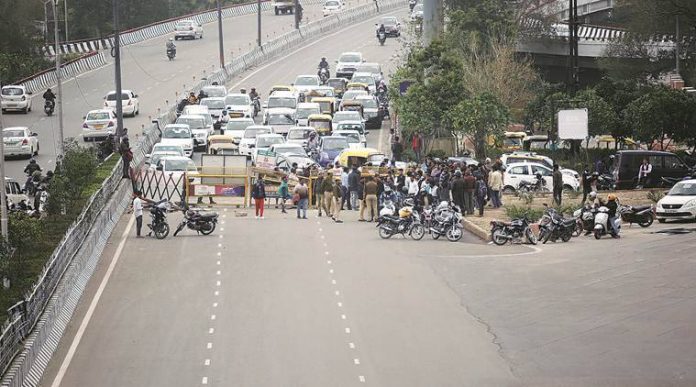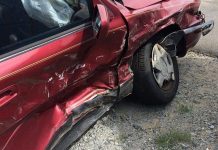This article is written by Gitika Jain, from Amity University, Kolkata. This is an exhaustive article which deals with the need to enact laws to stop road blockage.
Table of Contents
Introduction
Since everyone has the right to exercise their own fundamental rights peacefully, does not mean that they are given an unfettered right to block roads that cause maximum inconvenience to others who share roads with them. No matter what the cause is behind the blockage of the road there cannot be any justification for the same. It is high time now that there must exist a law that would make it obligatory for everyone to not indulge in any activity that leads to blockage of roads or rail routes or any routes whatsoever that can cause maximum inconvenience to others.
Practical instance
The Shaheen Bagh incident is one of the most disgraceful incidents of such circumstances where the routes connecting Delhi and Noida was blocked for more than 50 days by the protestors of Shaheen Bagh who were protesting against Citizenship Amendment Act but the question here is that why are they even allowed by the centre to indulge in such activity by such means.
That being said, the role of courts also comes into play. The question here again arises of the silence the court had adopted during the incident of Shaheen Bagh. The highest court of the land, the Supreme Court also did not direct anything related to clearance of such blockade. This should not be the case in any circumstances and the interests of the public at large should always be at the highest priority of the centre as well as the judicial system.
Important traffic laws in India
It is important to have a look at the important traffic laws that exist in India. The second-largest road network in the world that accounts for at least 10% of the worldwide road facilities is in India. The legislation which governs the traffic on road is Motor Vehicles Act, 1988 which was passed by the parliament of India and came into force on 1st July 1989, and which applies to the whole of India. Such laws were framed in India since 1914 but we can still find instances of accidents, road blockage, etc on the road. There have been various landmark judgements that depict the picture of road accidents, traffic jams, road rage, underage driving, drunk driving, etc. Driving properly on-road and acting sensibly is the responsibility of each and every citizen of India whether in the aspects of legal political social or moral scenarios. If any individual is found to violate this duty he will be considered as an irresponsible driver and citizen of India and is to be considered for penalties.
Since the most important state subject is road safety which is administered by the Motor Vehicles Act, 1988 under the transport department it is also one of the largest revenue earning departments. Detailed legislative provisions regarding the licence of the driver to conductors the registration of the vehicle is running on the road the control of them according to this provision and the penalties in case of any offence are on-road all mentioned under this Act. In order to check upon whether this act is being implemented the government made the Central Motor Vehicle Rules, 1989 and Rules of Road Regulations, 1989. They are the two concerned authorities under Section 68 of Motor Vehicles Act, 1988 which provides the following services:
- Services related to driving licences like issuing learner licence, renewal of licences, issuing a driving licence, renewal of such driving licences, conductor licence, issue an international driving permit, taking down any change of address in the driving or learner licence.
- Any services related to vehicle registration like permanent or temporary registration of the vehicle, transfer of ownership of the vehicle, termination of hire purchase or lease agreement, entry of hire purchase or lease agreement change in addresses of any of the owners’ vehicle, issue of no objection certificate, and issue of the clearance certificate.
- Apart from the above-mentioned services it also gives a service of collection of taxes and payment of taxes.
If there exists any violation of the rules and regulations related to the traffic laws they will be punishable under the penal actions of the Motor Vehicles Act 1988.
Laws governing the registration of vehicles
- Compulsory registration– Under Section 39 of Motor Vehicles Act, 1988 where it is mandatory for a vehicle to be registered under the act, non-registration of the same would result in non-compliance with the provisions.
- Jurisdiction for application– The concerned authority register vehicle on the basis of the place of residence or place of business where the vehicle will normally be kept.
- Application for jointly owned vehicles– In case of joint ownership of a vehicle the registration can be applied by anyone of the owners. Where the registered vehicle is kept in one state and is registered in another state for more than a period of 12 months and the owner needs to register that vehicle to that state also.
- Change in address– In case the owner needs to change the address he must approach the thirty within 30 days.
Driving licence laws
- Effective driving licence– The person who has not been disqualified to hold a driving licence due to any reason under Section 3 of the Central Motor Vehicle Act 1988 can apply for a driving licence.
- Age limit for obtaining a driving licence– A minimum of 18 years is necessary for a person to obtain a driving licence.
- Learners licence– Learner licence for means one which is issued by a competent authority to drive as a learner and the validity of such licences six months.
- Licence to drive transport vehicles by the learner- Unless and until the person has not driven a light motor vehicle for 1 year you cannot obtain this licence.
- Power to revoke licence– The power to revoke a licence lies on the licensing authorities. Licences can be revoked when a vehicle is being driven by a habitable criminal, drunkard addicted to narcotic drugs, any fraud driving with the intention of harming a person, etc.
Laws relating to pedestrian
These laws are governed by the Inter Motor Vehicles Act, 1988 which provides for preventing the vehicles to run on the footpath. The Rules of Road Regulation, 1989 and Section 7 to Section 38 of Motor Vehicles Act, 1988 and Section 138 clause (h) & (i) provides for:
- In the pedestrian crossings, the duty of the driver is always to slow down.
- No driver can park a motor vehicle on the footpath.
- No driver is allowed, by the Motor Vehicles Act, to drive on footpaths which will lead to congestion and blockage.
Traffic and safety issues
- Footpaths are no more safe for pedestrians– Less than 30% of the urban roads in India have footpaths. Even the roads are the most important public spaces for different sources to connect two grave concerns are often seen on roads only.
- Road rage– In the case of any criminal consequences human behaviour always ought to express himself through road rage. Since there are no defined laws for road rage in India but it can be referred to us violent accidents caused by stress while driving on roads. Road rage is considered to be a criminal offence because they may even lead to death or serious injuries.
- Drunken driving– The most common form of accidents happen because of drinking and driving. Consuming alcohol reduces the concentration power of a person before sitting on a driving seat and taking the responsibilities of everyone present in the car or any vehicle.
Section 134 of Motor Vehicle Act provides for the duty of driver of offending vehicle in case of an accident.
- Ban on the use of Black or reflective glasses– The orders of the Honorable Supreme Court of India has banned the use of black films or any materials on the windscreen and side windows of the vehicles. Violation of the same would result in the punishment with challan and on spot removal of films. In the case of Abhishek Goenka v. Union of India, the honourable Supreme Court banned this on the basis of the safety and security reasons of the public on road.
- Missing of speed breaker– The main reason for the presence of speed breakers on roads is to limit the speed of vehicles on congested roads and minimise the road accidents that take place on a daily basis in India. Missing speed breakers on the road will lead to a violation of the same rule.
Cases
- Justice Radhakrishnan report: The report of justice Radhakrishnan against the violators of law under Section 19 of Motor Vehicles Act 1988 provides each and every vehicle to be registered under the licensing authority otherwise it would result in disqualification of the owner from holding a licence for a specified period of time. Other reasons that can invite such disqualifications are:
- Driving at a speed exceeding the prescribed limit.
- Jumping red lights.
- Use of mobile phones while driving.
- Drinking and driving.
The two-wheeler vehicles have also attracted a new rule that is wearing a helmet whenever driving such vehicles.
- Sanjeev Nanda case: In the case of State Transport Police Station, Lodhi road v. Sanjeev Nanda an important judgement was passed regarding road safety. In this particular case, the respondents were charged under Section 201, 304 and 308 for rash driving. It was held by honourable judges of the court that the intention to cause that was not present in their case but the knowledge was there hence the respondent will be liable under Section 304 of IPC. Rash and negligent driving of BMW by the respondent resulted in so.
- In the case of Paschim Banga Khet Mazdoor Samity v. State of West Bengal and others, it was held by honourable Court that referring to the report of Justice Leela Mohan Ghosh it was directed to the union to take immediate medical care of the victim.
- Shaheen Bagh case: According to the Supreme Court, people have the fundamental right to protest in a democratic country but they do not have the unfettered right to block roads. there must exist a balance between the fundamental right and unfettered right. The question that arose from this case was that where should the protestors protest if not on the streets. In a democracy, people have the right to express their views but their lines and boundaries so they can protest but not influencing the rights of other people and blocking the road. There were two petitions that were filed in the supreme court by BJP leader Nandkishor Garg and a lawyer Amit Sahni to stop and end the road blockage that was arising because of the anti CAA protestors on the Shaheen Bagh. The Supreme Court ruled that right to protest has been recognised as a right in all over democracy but this fundamental right should be subject to some public order and security of the state there for their needs a lot with past against road blockage and congestions.
Conclusion
The best connectivity source within states and across and intercountry are the roads and they provide social and financial Health tourism connectivity for every individual. If the safety and basic rights of people are violated and forgotten on the roads they can even cause damages to certain individuals. Therefore, it is important to realise that the right to life and liberty also ensure the right to safety at every level. walking on roads with a rise in road accidents or road blockage concerns are leading to increasing damages to the rights of the public. Therefore, there needs to be a sensitized law towards the public for free movement of vehicles and non-congestions on road. This will make sure that no more traffic rules or road safety violations occur in day to day life and the theory of less fine for traffic violations can be adopted in no time. There is definitely a need for stricter traffic rules and regulations that can combat the problems related to road blockage or conditions and the government bodies or other authorities should make sure the same in the near future.
References
- https://indianlawwatch.com/practice/traffic-laws-and-road-safety-issues-in-india/
- https://www.putevi-srbije.rs/pdf/law_on_public_roads.pdf
- http://www.legalservicesindia.com/law/article/1418/4/Enact-Law-To-Stop-Blocking-of-Roads-Under-Any-Circumstances
LawSikho has created a telegram group for exchanging legal knowledge, referrals and various opportunities. You can click on this link and join:












